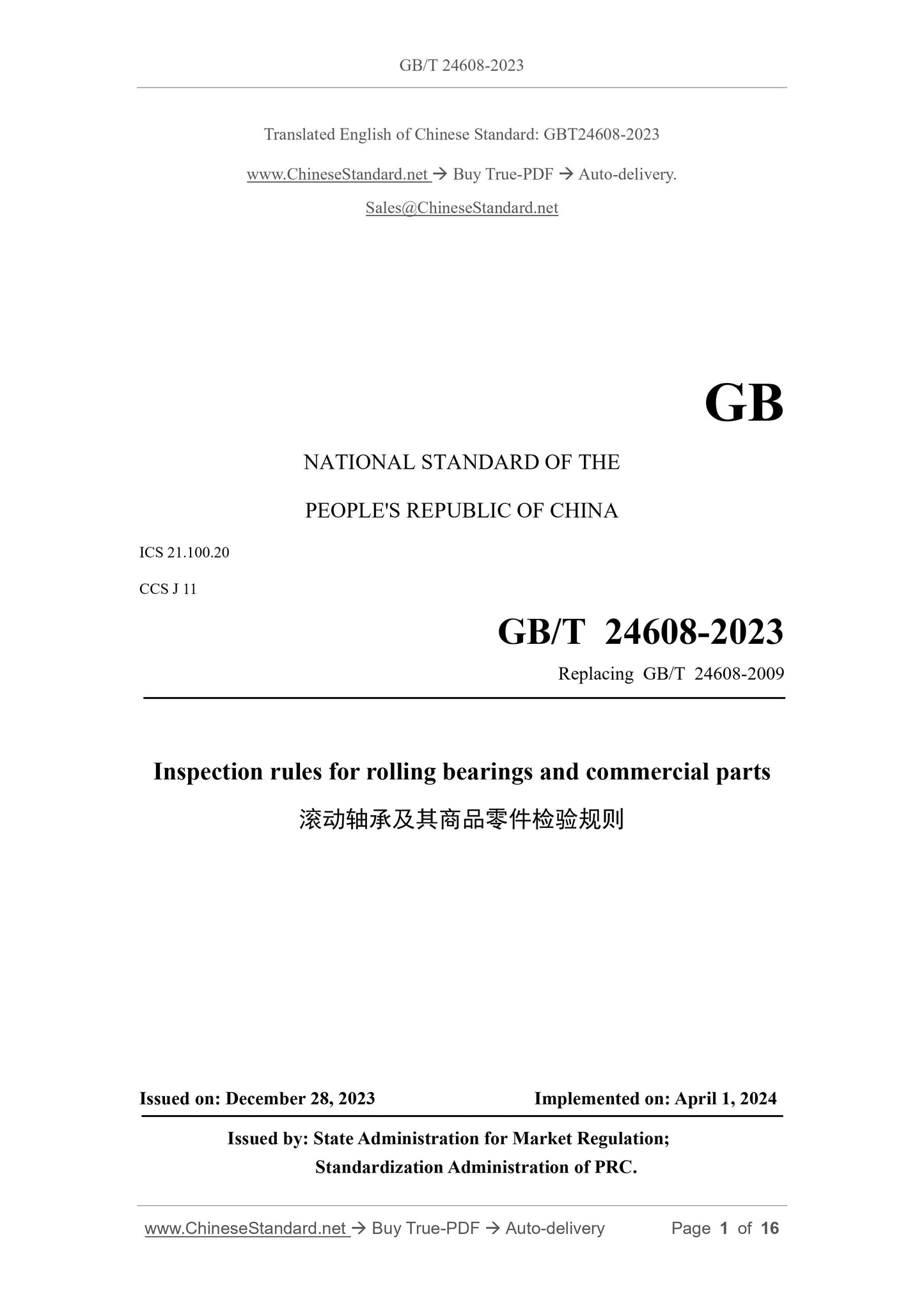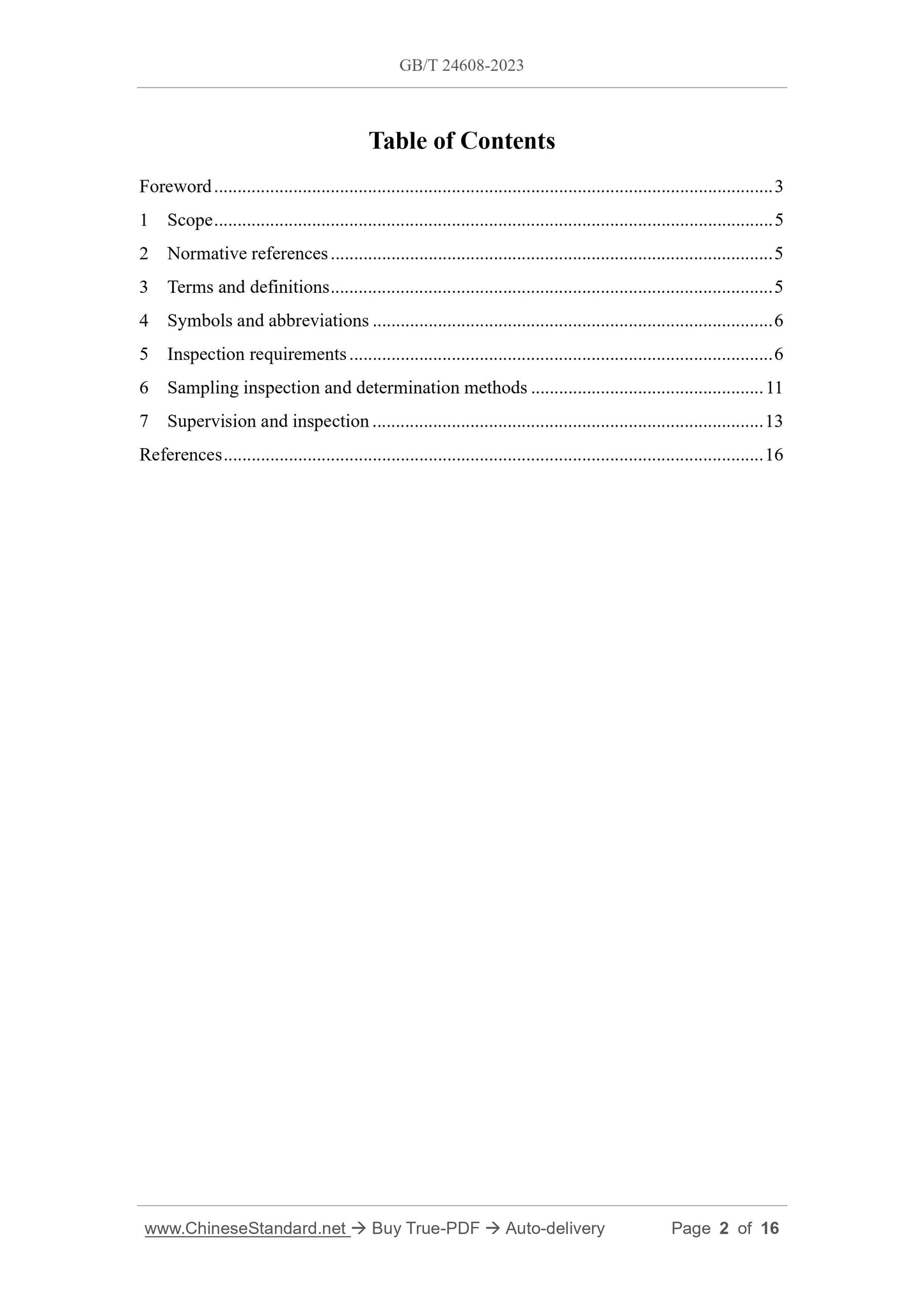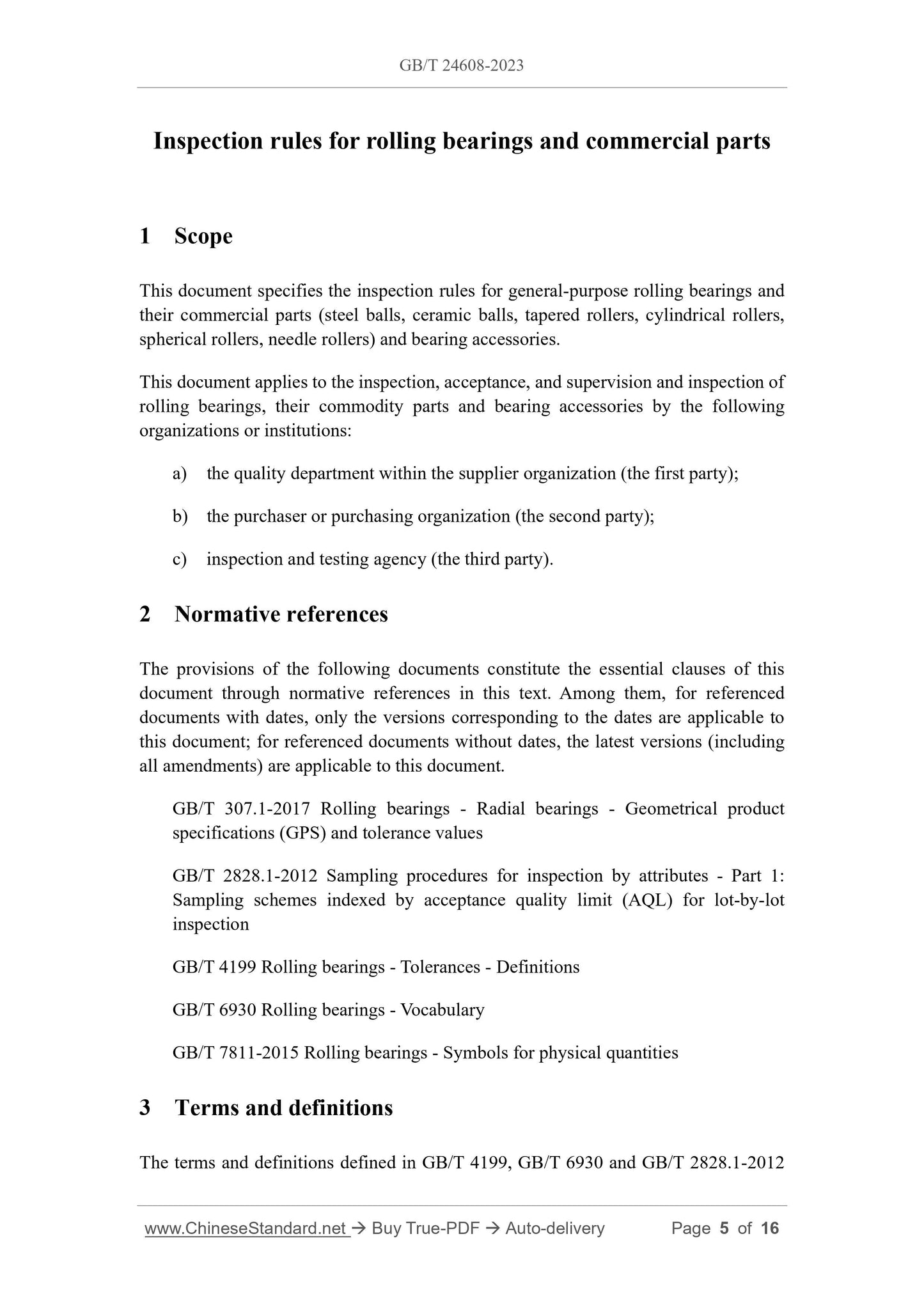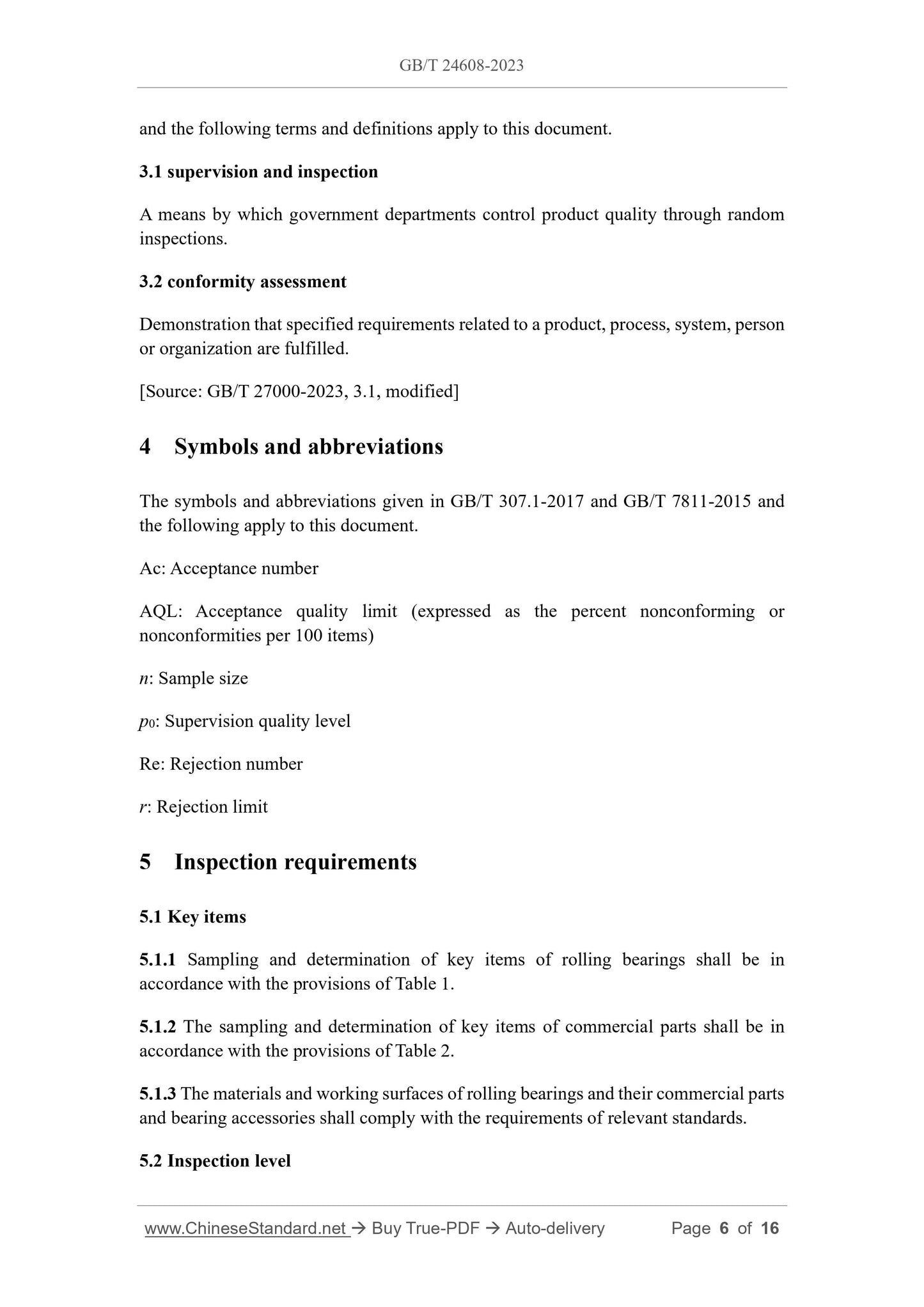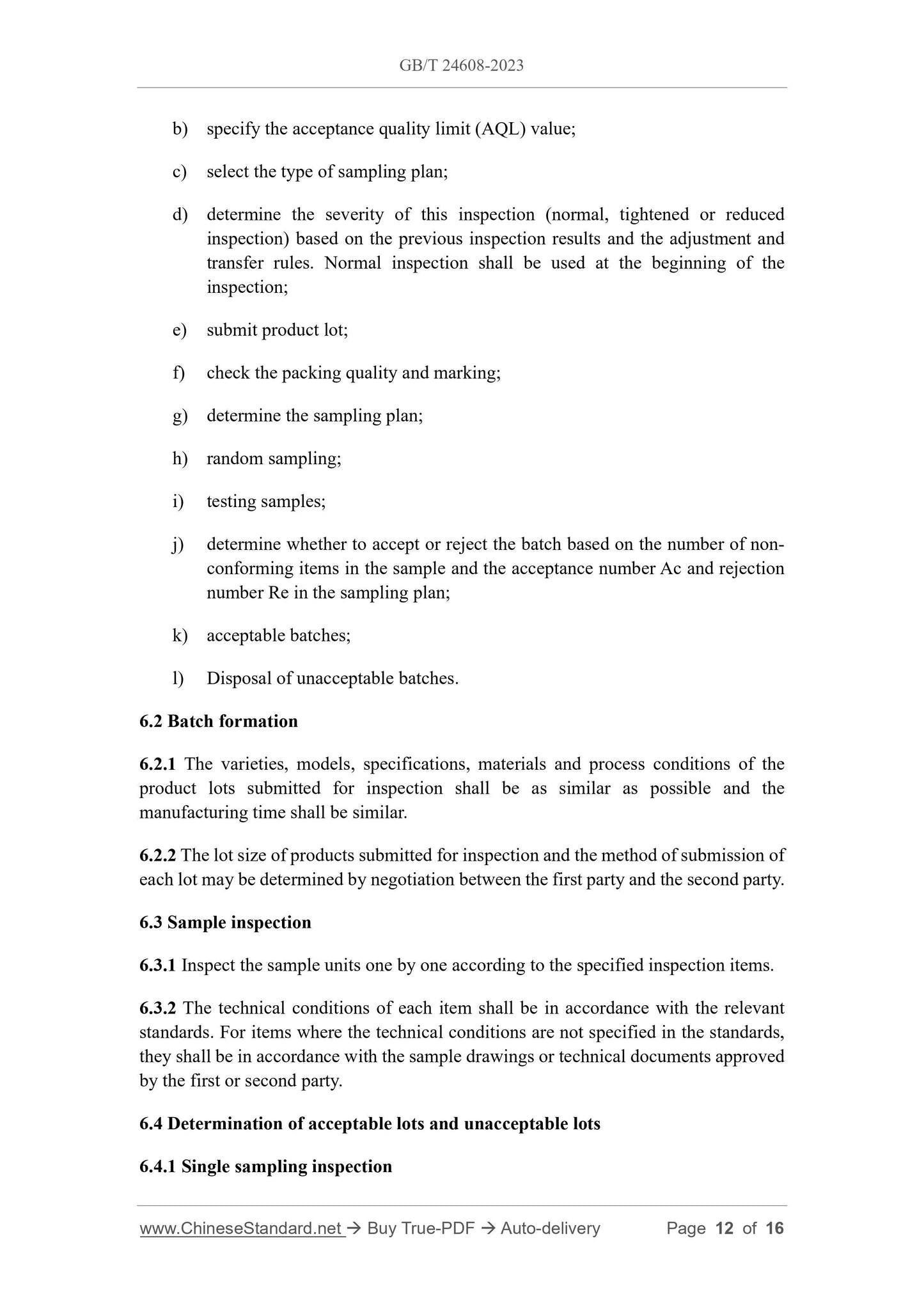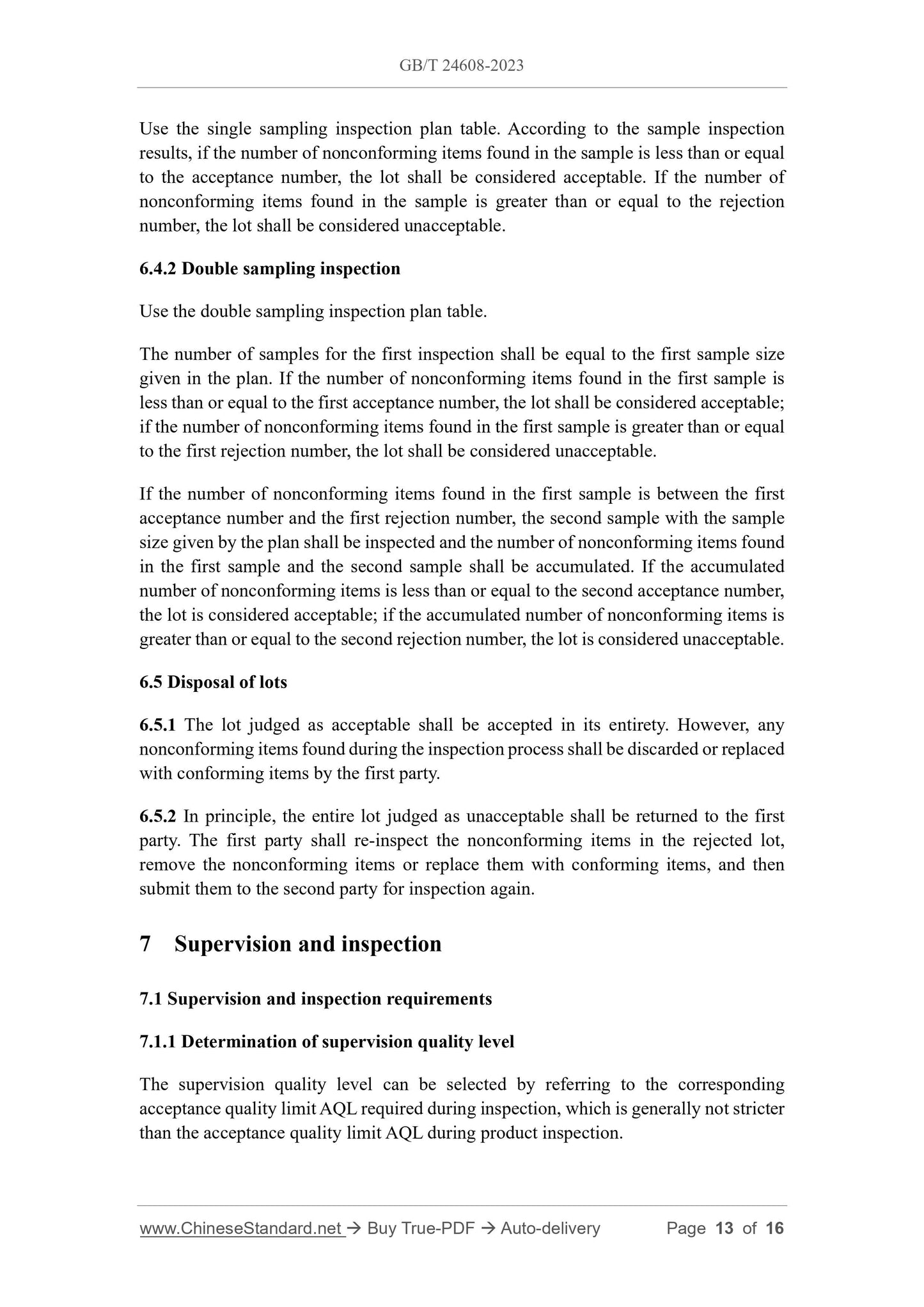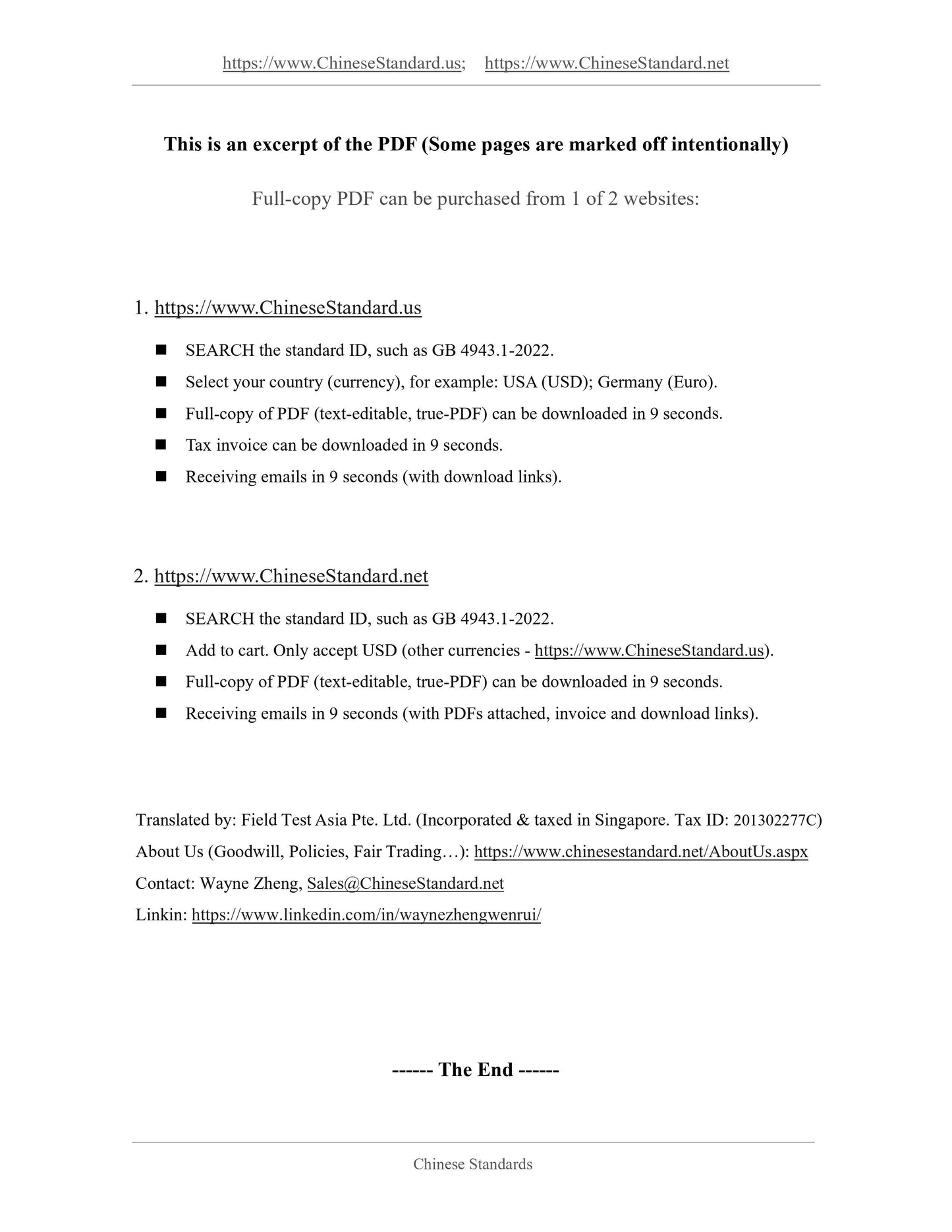1
/
of
7
www.ChineseStandard.us -- Field Test Asia Pte. Ltd.
GB/T 24608-2023 English PDF (GB/T24608-2023)
GB/T 24608-2023 English PDF (GB/T24608-2023)
Regular price
$275.00
Regular price
Sale price
$275.00
Unit price
/
per
Shipping calculated at checkout.
Couldn't load pickup availability
GB/T 24608-2023: Inspection rules for rolling bearings and commercial parts
Delivery: 9 seconds. Download (and Email) true-PDF + Invoice.Get Quotation: Click GB/T 24608-2023 (Self-service in 1-minute)
Newer / historical versions: GB/T 24608-2023
Preview True-PDF
Scope
This document specifies the inspection rules for general-purpose rolling bearings andtheir commercial parts (steel balls, ceramic balls, tapered rollers, cylindrical rollers,
spherical rollers, needle rollers) and bearing accessories.
This document applies to the inspection, acceptance, and supervision and inspection of
rolling bearings, their commodity parts and bearing accessories by the following
organizations or institutions.
a) the quality department within the supplier organization (the first party);
b) the purchaser or purchasing organization (the second party);
c) inspection and testing agency (the third party).
Basic Data
| Standard ID | GB/T 24608-2023 (GB/T24608-2023) |
| Description (Translated English) | Inspection rules for rolling bearings and commercial parts |
| Sector / Industry | National Standard (Recommended) |
| Classification of Chinese Standard | J11 |
| Classification of International Standard | 21.100.20 |
| Word Count Estimation | 14,120 |
| Date of Issue | 2023-12-28 |
| Date of Implementation | 2024-04-01 |
| Older Standard (superseded by this standard) | GB/T 24608-2009 |
| Issuing agency(ies) | State Administration for Market Regulation, China National Standardization Administration |
Share
